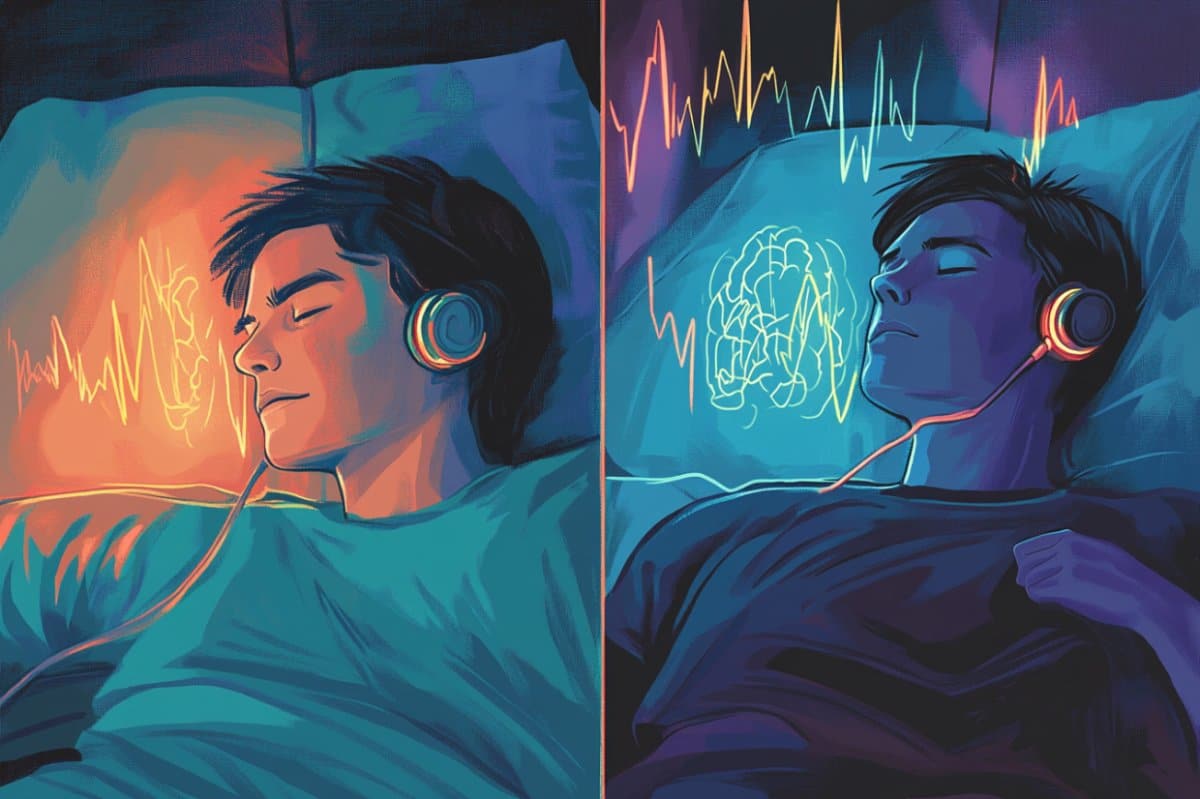Summary: A new study finds that patients with insomnia often retain accurate sleep-wake perception and intact regulatory systems, despite feeling as though they sleep poorly. Using serial awakenings during sleep lab monitoring, researchers found no significant difference in sleep perception between healthy individuals and those with insomnia.
This suggests that cognitive, emotional, and behavioral factors—not broken sleep mechanisms—may drive insomnia complaints. The findings reinforce cognitive behavioral therapy for insomnia (CBT-I) as the preferred first-line treatment over medication.
Key Facts:
- Sleep Perception Intact: Insomnia patients perceived sleep similarly to healthy controls during lab tests.
- Brain Arousal Link: High-frequency brain activity during sleep was linked to the perception of being awake.
- CBT-I Supported: Findings strengthen the case for CBT-I as the primary treatment approach.
Source: University of Geneva
Research led by the Geneva University Hospitals (HUG), the University of Geneva (UNIGE) and the Universitäre Psychiatrische Dienste Bern (UPD) at the University of Bern (UNIBE) suggests that direct sleep-wake perception and regulatory systems are often intact in patients with insomnia disorder.
This finding highlights the opportunity for patients and healthcare providers to contribute to improvements of sleep related complaints through cognitive behavioral therapy for insomnia (CBT-I) – the recommended first-line treatment for insomnia – rather than medication-based treatment.

Results are in the journal Scientific Reports.
Sleep is essential for healthy functioning. Insomnia disorder is prevalent, affecting around 5 to 10% of the adult population. The primary issue is a subjective complaint of reduced quantity or quality of sleep, which is often not observed in objective sleep measurements.
Research lead by Carlotta Schneider, PhD student and assistant psychologist at UPD and UNIGE, in the research group of Prof. Christoph Nissen, Chief-physician of the Division of psychiatric specialties and Director of the Sleep medicine center (HUG), and Full Professor in the Department of psychiatry at the UNIGE Faculty of Medicine, studied sleep and serial deliberate awakenings in a sleep laboratory setting. The study involved 30 healthy participants and 30 patients with insomnia disorder.
After two nights dedicated to adaptation and sleep data collection, on a subsequent experimental night, participants in both groups were awakened up to 12 times during non-rapid eye movement (NREM) sleep via a vibrating bracelet and asked about their perception of having been asleep or awake through an automated interview.
Intact sleep-wake regulatory systems
In approximately half of the awakenings, participants in both groups reported that they had been asleep, whereas in the other half, they stated that they had been awake. High-frequency brain activity during sleep, considered an index of arousal, was associated with the perception of having been awake across groups.
Although patients reported substantial subjective complaints about their sleep, objective sleep parameters and direct sleep-wake perception did not significantly differ from those of healthy participants.
The results are in line with emerging concepts of a physiological persistence of wake-like activity during sleep (sleep–wake continuum) that transcends traditional views of exclusive sleep–wake boundaries.
The results also support other findings suggesting that sleep-wake regulatory systems, as assessed by current standard measures of sleep, are often intact in patients with insomnia disorder. Rather, the complaints appear to develop over time through sustained cognitive, emotional and behavioral mechanisms, which need to be further tested.
These results have potential implications for concepts of insomnia disorder and sleep-wake regulation, as well as future treatment developments. They support the notion that many patients, after exclusion of specific organic sleep or other disorders, can learn to improve their sleep-related difficulties through CBT-I, the current first-line treatment.
Pharmacotherapy can be offered for short-term treatment, but can be associated with the risk of side-effects, tolerance and dependence. Further studies are currently underway on the concept of a sleep–wake continuum, potential subgroups of patients, and broader implementation of CBT-I.
About this sleep and insomnia research news
Author: Antoine Guenot
Source: University of Geneva
Contact: Antoine Guenot – University of Geneva
Image: The image is credited to Neuroscience News
Original Research: Open access.
“Multimodal assessment of sleep-wake perception in insomnia disorder” by Christoph Nissen et al. Scientific Reports
Abstract
Multimodal assessment of sleep-wake perception in insomnia disorder
Insomnia disorder is a prevalent health problem. The primary diagnostic criterion is a subjective complaint about reduced quantity or quality of sleep, which is often not observed in objective sleep measurements.
Here we show that patients with insomnia disorder, characterized by substantial subjective sleep complaints, did not differ on objective measures of sleep continuity, sleep architecture, spectral power, spectral slope, and phase-amplitude coupling of slow oscillatory and spindle activity.
Perception of wakefulness following serial awakenings from NREM sleep was frequent in both patients and controls, with no significant group difference.
High frequency spectral power, as an index of cortical arousal prior to awakening, but not standard measures of sleep, predicted the perception of wakefulness across groups, possibly related to physiological wake-like activity during sleep.
Our results support the notion that sleep-wake regulatory systems and direct sleep-wake perception are often intact in patients with insomnia disorder.
These results propose empirical support for cognitive behavioral therapy for insomnia as the first-line treatment.






